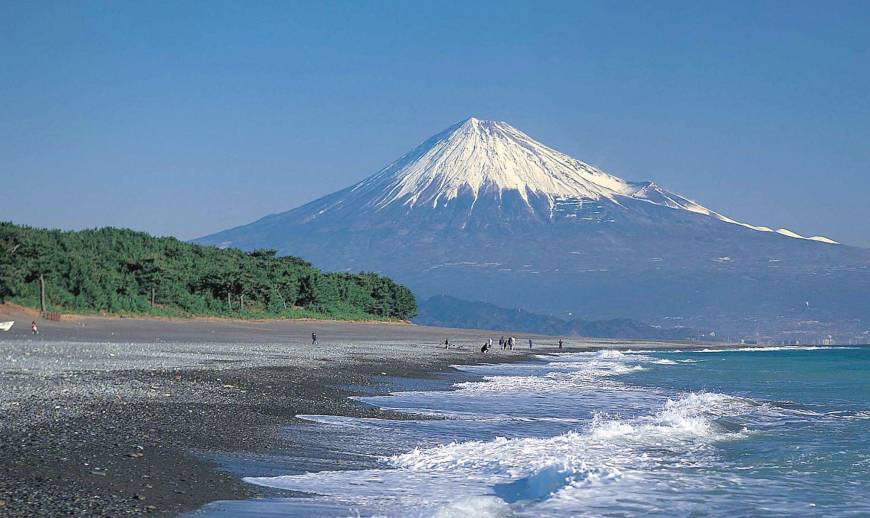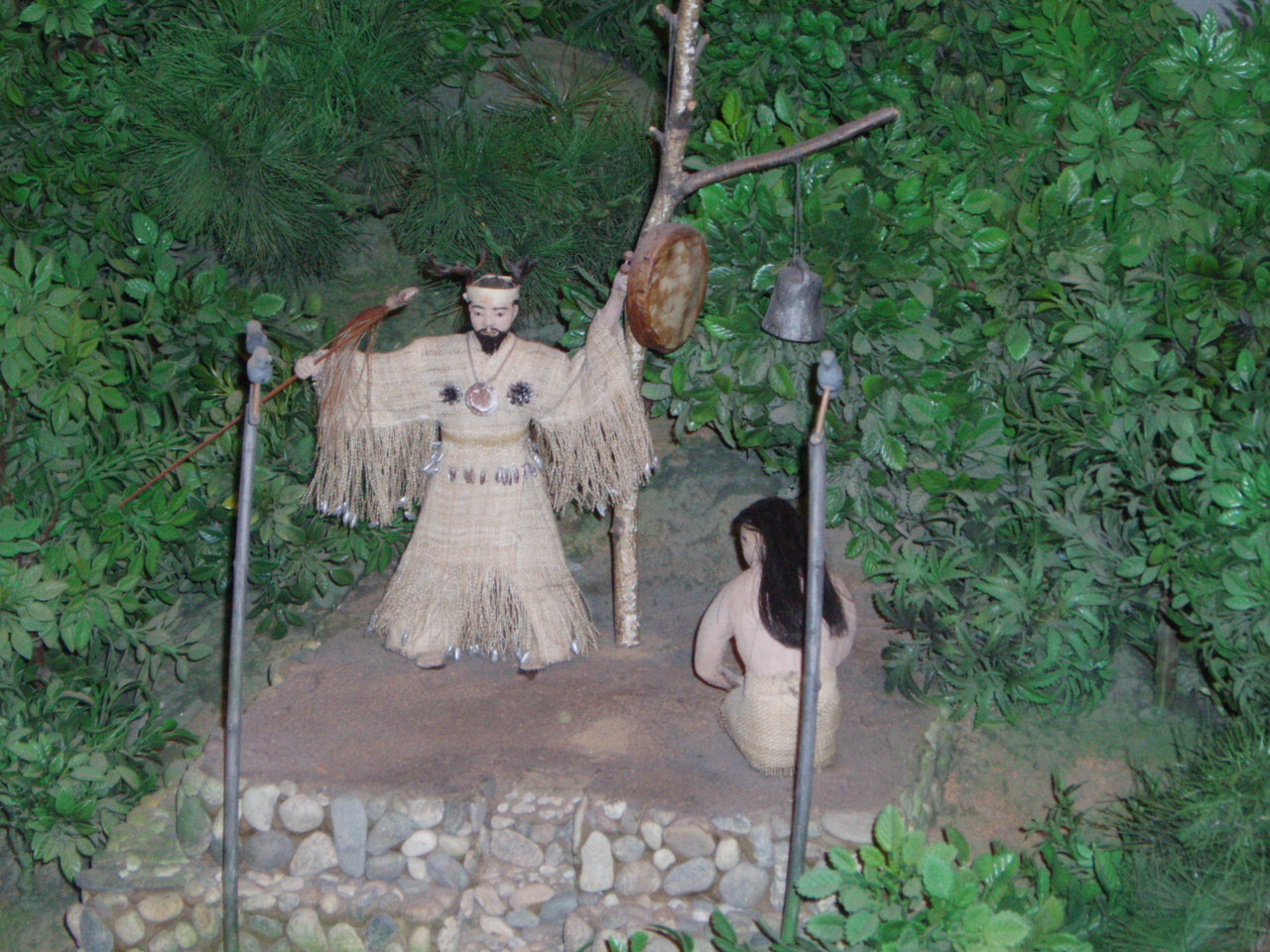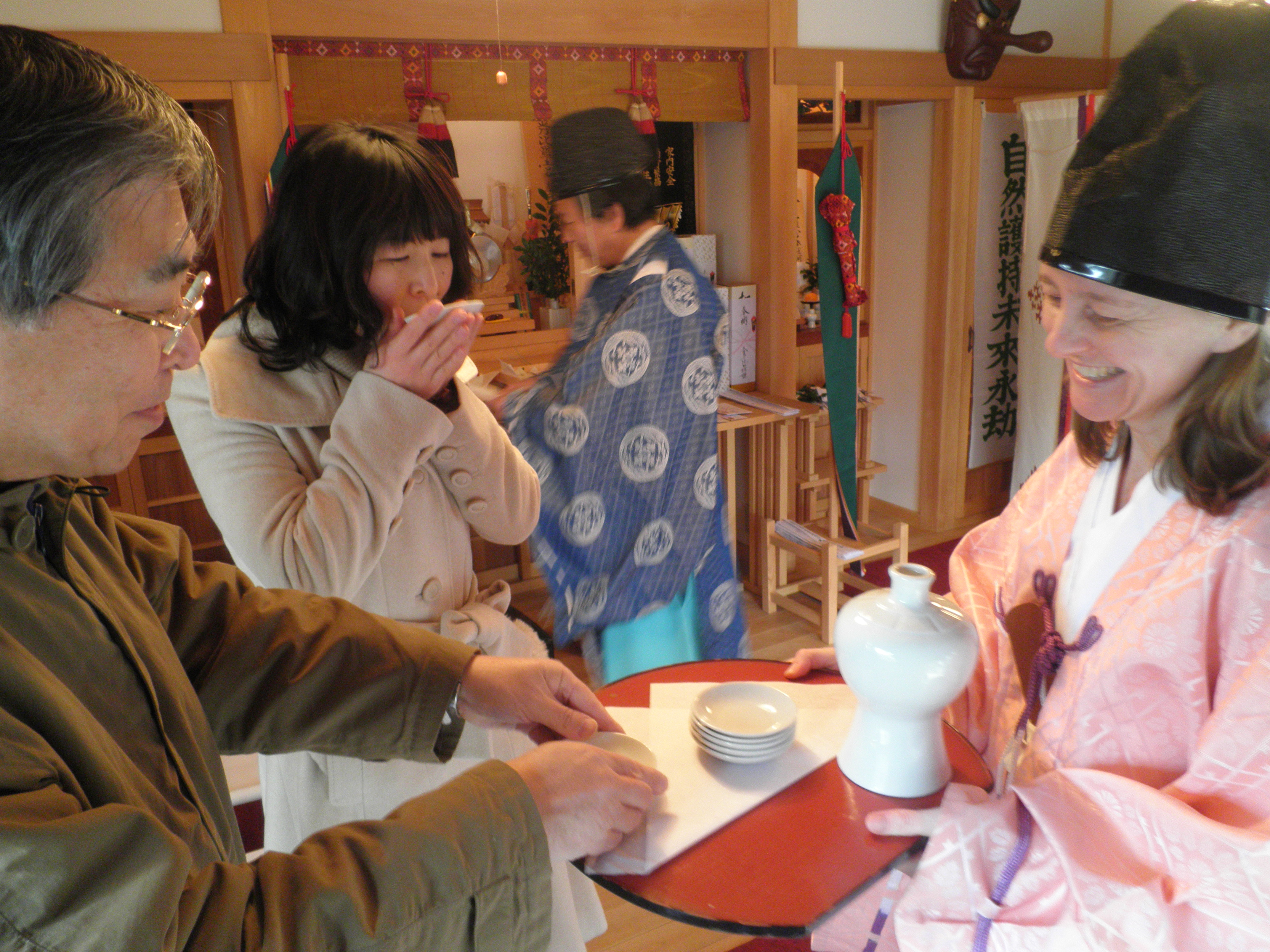
Sea and sacred mountain (courtesy Cultural Affairs Agency/Kyodo)
The shaman is a figure of authority who is not only guardian of the clan history but a master of ritual, healing and divination. This derives from the ability to communicate with ancestral spirits, which preside over descendants, sometimes acting in a protective manner but if dissatisfied causing havoc, illness and unrest. Seeking harmony in place of disorder is the task of the shaman, achieved through such techniques as trance, ritual and dream interpretation.
Thanks to their privileged access to the spirit world, the shamans are able to pronounce on matters of physical and mental well-being, as well as see into the past and future. In Siberia vodka facilitates the process, opening up channels of communication and facilitating bonding with the other world. More than a means of intoxication, it is an agent of purification that clears away impurities that obscure clarity of vision. The ‘little water’ is vital to a healthy life.

Model of an ancient Korean shaman
In some shamanic cultures, drugs are used to induce altered consciousness, opening up the ‘doors of perception’. In Shinto though rice wine is the preferred option, and at Japan’s wilder festivals huge quantities of omiki [sacred saké] are consumed by participants as they ‘break on through to the other side’. Becoming one with the spirits and with fellow participants is the name of the game. The sipping of saké at shrine rituals is the formal legacy of such Bacchanalian rites.

In shamanic cultures, the spirits of the dead often became identified with local mountains. Since bodies were left on mountainsides or behind rocks, their spirits were absorbed into the landscape. A similar notion underlies the practice of visiting graves to pay respects to the dead, as if the essence of a person remains with their physical remains. One can see how easily this would have prompted in ancient people the idea of ancestral spirits becoming spirits of place. And if rocks and mountains could contain spirits, then so could trees, streams and waterfalls.
As in China, Japanese emperors and other high figures were traditionally placed in burial mounds, accompanied by all the goods and precious objects that they might possess. Clans living nearby looked on the spirit in the mound as a guardian deity, and in this way the clan had a real sense of belonging to the land. In death members of the clan too would literally become part of the same territory, unified with the rest of the clan. Even now, when modernity has led to mobility, there is a strong tie among Japanese to their ujigami, or clan shrine. Most of these shrines lie within the protective shadow of a mountain, whose deity looks after those in the valley below. Mountains are our guardians. Mountains are the shaman’s friend.

Caitlin Stronell serving ‘omiki’ (sacred saké) at Asakawa Konpira

Leave a Reply